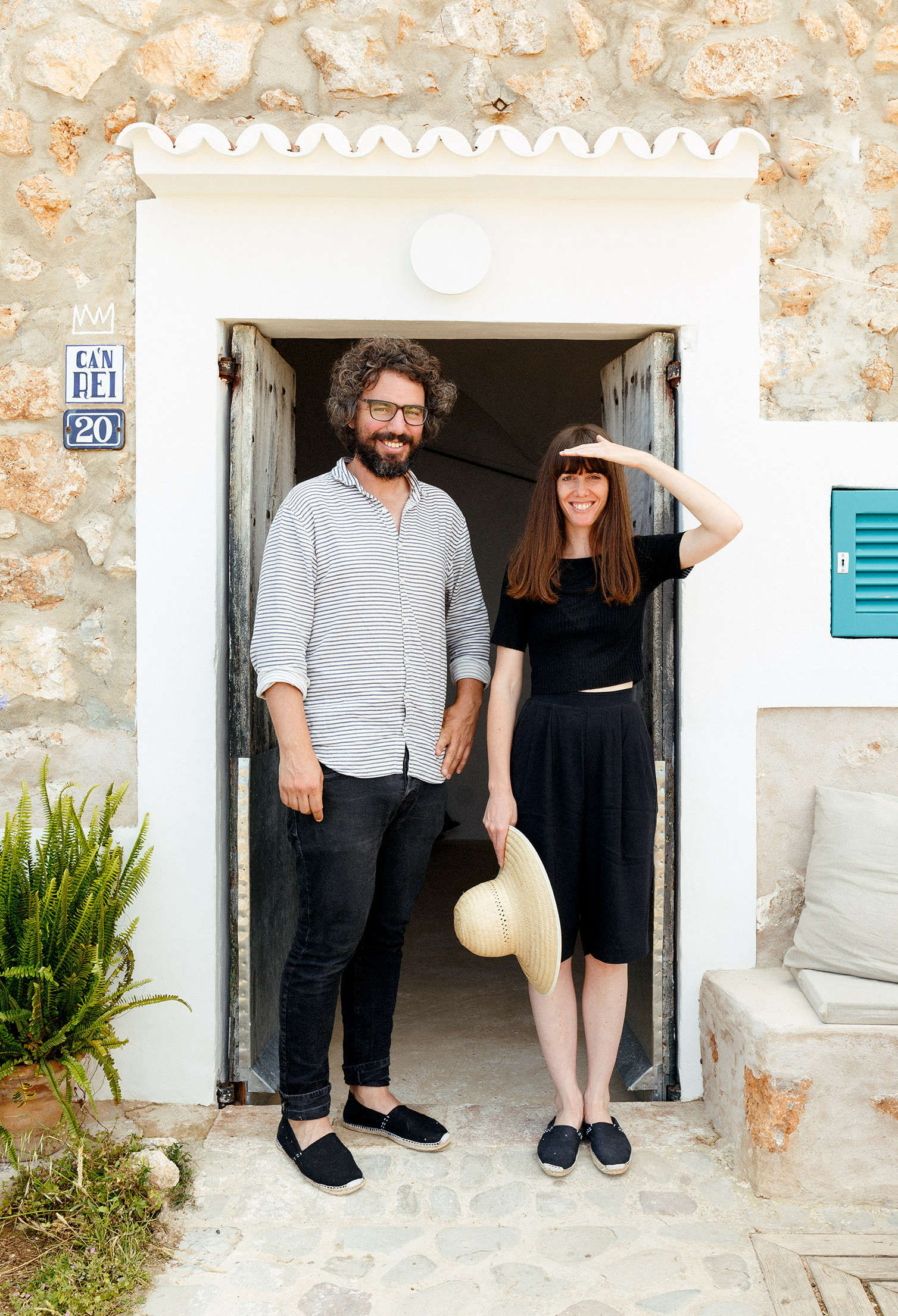A 17th-Century Garden on Mallorca, Rehabbed for 2018

Photography by Luis Díaz Díaz, courtesy of Isla Architects.
Of all the ideas I file away for my someday-house (black-painted floors, a garden above a rocky beach in Maine), I never thought that teules pintades—painted roof tiles from the Medieval era on the Spanish island of Mallorca—would make the list.
But after writing last week on Remodelista about Ca’n Rei, a 17th-century Mallorcan house on a cliff overlooking the Balearic Sea, the tiny painted pictograms are on my wish list.
The rehabbed house, with a newly sunny exterior, sits on a rocky cliff.
Juan Palencia and Marta Colón, the couple behind Isla Architects, found the 17th-century house in the little seaside town of Banyalbufar when they moved to Mallorca last year from Basel, Switzerland, to set up their firm on the island.
Palencia and Colón by the front door (actually a set of vintage wooden double doors). Note the paved-stone pathway and sculptural stone bench topped with simple cushions, which turns the narrow front garden into an outdoor lounge space.
A hand-drawn crown adds some whimsy. The architects used the house number as an opportunity for artfulness—and another nod to Mallorcan tradition.
Before
The exterior, before, with less-than-bright shutters, a potted garden that felt hemmed-in by a rock border, the small patio, overgrown with weeds, and nowhere to sit and enjoy the view.
Here are the teules pintades I’ve been coveting for the past week.
After
The couple painted the shutters in a cheerful teal: “The traditional color for blinds in this part of the island is mainly green and also blue, so we choose something in the middle that we liked.”
Inside, the effect is bright and beach-like.
The windows in the front of the house have unobstructed views of the Balearic Sea (and are often left open to let in the ocean air).
Here, vines give the illusion that the old house is being overtaken by the wild Mallorcan botany. They installed a clay ventilation system between the house’s inner and outer walls to keeps the inner walls dry, and treated the walls on the back of the house with a “highly-breathable mortar.”
The couple relaxes on the long, rambling stone wall that divides the narrow front garden and terrace from the hill.
The rambling village is built into the seaside cliffs.
A new kind of curb appeal: Even from a distance, out over the ocean, Ca’n Rei stands out for its cheerful facade.